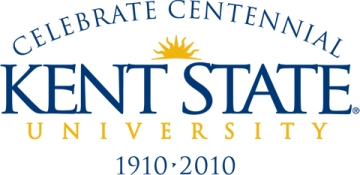



 WME Research and Development
WME Research and Development
WME Ultimate Goal
Michael Mikusa:
Our WME should be customizable and be able to share lessons and testing resources, however it needs to be "plug and play" at first so teachers can appreciate it while they use it. They don't have time to spend many hours learning how to use features that they dont' know why they might need them. We should create a system that is usable without any changes...but have the capability ...when teachers are ready.
Paul Wang:
In our WME design and implementation, we must guard very jealously the classroom readiness of WME and not get carried away by bells and whistles and by too much power and flexibility that may add to the complexity and reduce ease of use.
Hence, we must achieve the adaptability and interoperability with minimum impact on "usage readiness". We want WME to run out-of-the-box. All customizations and adaptations should be optional.
WME Components

We are using new names to better reflect WME will be organized and deployed. Current these are:
TM -- Topic Module (contains ALs)
AL -- Active Lesson (contains a few LPs)
LP -- Lesson Page (or Part) (contains fixed and editable content and questions
may be placed at the end of each LP)
EC -- Editable Content
For the purpose of constructing several fully developed such typical pages, we are considering: Sample teacher guide (for school site) and Sample Typical WME Page (for open site)
Model Site Internal Architecture and Implementation (Kahraman Cem Karadeniz and Xiao Zou), developing model site
Right now the most important work is still in how well the model site structure supports portability, interoperability, easy site maintenance/admin, end-user editing, and educational features such as teacher's guides and integration with DMAD, MathEdit, MathChat and MathBoard.
Glossary for Mathematics Education (Adnan Eshaque), and the MG site
Second Life for Education and WME Documentation Wiki (Dean Zeller)
WME Model Site Graphical and User Interface Design (Vessela Kouzova)
Answer Checking (Paul Wang)
WME application in China (Prof. Li Lian and graduate student Su Wei at Lanzhou University)
MathChat classroom chat (David Chiu)
Distributed Mathematics Assessment System (DMAS) (Saleh Al-shomrani)
Teacher's Guide and WME Ohio Standards Compliance (Ellen Mulqueeny)
SVG-based Interactive Geometry (Xun Lai)
Mathematics Education Markup Language (MeML) and MeML Plugin (Woodpecker) (Xiao Zou)
MathEdit and updating MathPASS (Wei Su at Lanzhou Univ.)
WME for returning workers (Dean Zeller)
WME Mobile Server (Xiao Zhou)
User and System Documentation
Please find introductions and guides to WME, user and system documentation for WME compontnets on our documentation page
System Integration Notes
Components will integrate seamlessly into the WME system and cooperate in a well-defined and nicely interfaced manner. The goal is to combine and integrate the components into the WME system in a way that maximizes usability and minimizes system complexity.
Login - We'll use PHP sessions for users. Login should be ``As Required''. Namely, when some functionality requires login and finds that user not logged in already, a PHP login function will be called. Logout should be part of page top navigation.
TM, AL, LP and Manipulative interoperability and customization: draft manipulative architecture, AL and manipulative demo page, Paul's presentation PDF slides.
TM, AL, LP, Educational Standards and Model site --
1. The way classes are taught from a WME site. 2. The way TMs and ALs are classified in terms of a particular education standard (national and state standards may differ slightly, or a lot if we go to different countries).Item 1 is most important in terms of the actual usage from teachers and students. But item 2 is important to make sure that ALs and TMs respond to the appropriate standards and that a particular grade level have enough ALs and TMs to cover the standard-recommended curriculum.
Hence, we need to have dynamically generated "Standards View" of our TM and AL collections. Each AL will have stored with it one or more "Standard Area Compliance Designation" (SACD).
Perhaps more importantly, we need to consider meta data embeded in each AL and TM that deals with subject keywords, prerequsites, grade levels, etc. and how such meta data will be used for integrating WME components.
For teachers, I believe we need to have the concept of a "class plan page" (CPP) that is customizable by each teacher for each class. Links to CPPs are placed automatically in the "grade level" page for easy access. A CPP can list the class content (links to TMs on a week by week basis for example) for an entire semester for a particular course and is customizable per teacher and per class.
Xiao is working on a WME library in PHP to make coding ALs and TMs simple, easy, and consistent. The site organization will good support for component independence and interoperability.
Integration with the SVG tool: to create in-page questions based on SVG (questions involving interactive geometry), to store and retrieve SVG-based answers from students, to add SVG interaction in assessments.
DMAD integration: reaching DMAD tool from ALs, attaching DMAD created tests to ALs, administering and tests from ALs. Linking wrong answers to evaluations and to remedial ALs.
System integration issues: how are components organized and placed in folder structures and packaged for relocation?
The components are independently documented, for programmers and for users. How do we want to organize the overall WME documentation scheme?
Educational Materials
For a systematic effort to build interactive, effective, Web-based mathematics lessons, see this page.
Website Design
WME Site design, information architecture, usability and visual communication desing issues are important. Here are effrots in these directions.
- Initial site designs by Anne
- Photoshop graphics files by David Chiu for the Kimpton site is at the graphics folder.
- GIF, PNG, and JPG files for Kimpton are in kimpton/img.
- GIF, PNG, and JPG files for the model site are in WME/graphics on eagle.cs.kent.edu.
Please see this latest design draft and the draft site for the evolving site user interface design.
The draft design as of April 2006.
Publications
Su Wei, Paul S. Wang, Lian Li MathPASS: A Remedial Mathematics System with Automated Answer Checking and presentation, CICM (Conferences on Intelligent Computer Mathematics) Paris, France, July 5-10 2010.
Xun Lai GeometryEditor: An SVG-based Interactive Geometry System, Presentation at 7th International Conference on Scalable Vector Graphics, Mountain View, California, USA, October 2 to 4 2009.
Su Wei MathEdit: A Web-based Mathematical Expression Editor, presentation at Chinese Academy of Sciences, Beijing, China, Nov. 2, 2009
Saleh Al-shomrani A WEB-BASED DISTRIBUTED AND INTEROPERABLE TOOL FOR SHARING MATHEMATICAL ASSESSMENTS AND SUPERVISING ONLINE TESTS, Ph.D. Dissertation, Kent State University, 2008.
Saleh Al-shomrani and Paul Wang DMAS: A Web-based Distributed Mathematics Assessment System, International Conference on Learning 2008, University of Illinois at Chicago, USA, June 3-6, 2008. (Presentation).
The WME Team, WME Tutorials ACM Communications in Computer Algebra, Volume 42, Number 2, Issue 164, June 2008, pp. 67-68, 78-79, 87-88.
P. Wang, M. Mikusa, S. Al-shomrani, X. Lai, X. Zou, D. Zeller WME: a Web-based Mathematics Education System for Teaching and Learning, ICME 11 – TSG 22 Theme 3 the 11the International Congress on Mathematical Education, Monterrey, Mexico, July 6 - 13, 2008.
Wei Su, Paul S. Wang, Lian Li An On-line MathML Editing Tool for Web Applications 2nd International Multi-Symposiums on Computer and Computational Sciences 2007 (IMSCCS|07), The University of Iowa, Iowa City, Iowa, USA, pp. 458-464.
Wei Su, Paul.Wang, Lian Li, Guanyu Li, Yanjuan Zhao. MathEdit, A Browser-based Visual Mathematics Expression Editor, Proceeding of The 11th Asian Technology Conference in Mathematics, HongKong, December 2006, pp. 271-279.
Xun Lai and Paul Wang. GeoSVG: A Web-based Interactive Plane Geometry System for Mathematics Education, Proceedings, the 2nd IASTED International Conference on EDUCATION AND TECHNOLOGY (ICET), July 17-19, 2006, pp. 5-10.
Saleh Al-shomrani and Paul Wang. Design and Implementation of an Assessment Database for Mathematics Education, Proceedings, the 2nd IASTED International Conference on EDUCATION AND TECHNOLOGY (ICET), July 17-19, 2006, pp. 173-179.
Xiao Zou and Paul Wang. MEML: Supporting Structured, Interoperable and Dynamic Web-based Mathematics Education, Proceedings, the 2nd IASTED International Conference on EDUCATION AND TECHNOLOGY (ICET), July 17-19, 2006, pp. 113-120.
David Chiu and Paul Wang. An Approach for Interoperable and Customizable Web-based Mathematics Education, ICM Technical Report, ICM-200509-0006, Sept. 2005. Also Proceedings, the Fifth IASTED International Conference on Web-based Education, Jan. 23-25, 2006, Puerto Vallarta, Mexico, pp. 80-87.
Wei Su, Lian Li, Paul Wang. Lesson Page Structure and Customization in WME, IAMC 2005 Workshop, online Proceedings, July 24 2005, Chinese Academy of Sciences, Beijing, China
Xun Lai and Paul Wang. An SVG Based Tool for Plane Geometry and Mathematics Education, IAMC 2005 Workshop, online Proceedings, July 24 2005, Chinese Academy of Sciences, Beijing, China
P. S. Wang, M. Mikusa, S. Al-shomrani, D. Chiu, X. Lai, and X. Zou. Features and Advantages of WME: a Web-based Mathematics Education System, Proceedings of the IEEE Southeast Conference, IEEE, Ft. Lauderdale, FL, April 8-10 2005, pp. 621-629.
S. Al-shomrani and P. S. Wang. Building DMAD: A Distributed Mathematics Assessment Database for WME, Proceedings of the IEEE Southeast Conference, IEEE, Ft. Lauderdale, FL, April 8-10 2005, pp. 630-635.
D. Chiu. Customization and Interoperability in WME, Proceedings of the IEEE Southeast Conference, IEEE, Ft. Lauderdale, FL, April 8-10 2005, pp. 636-640.
X. Zou. Support for Online Mathematics Education: MeML and WME Services, Proceedings of the IEEE Southeast Conference, IEEE, Ft. Lauderdale, FL, April 8-10 2005, pp. 656-662.
Michael Mikusa, Paul S. Wang, David Chiu, Xun Lai, Xiao Zou. Web-based Mathematics Education Pilot Project, Proceedings of the 2004 Conference on Information Technology in Education (ITE'04), Elizabethtown College, Elizabethtown, PA, September 18, 2004, pp. 132-138.
David Chiu. WME Site Organization and Customization Support, Proceedings of the 2004 Conference on Information Technology in Education (ITE'04), Elizabethtown College, Elizabethtown, PA, September 18, 2004, pp. 110-115.
David Chiu. Web-based Mathematics Education with MathChat, Proceedings of IEEE/ITCC'2004, April 5-7 2004, Las Vegas, Nevada, pp. 709-717.
Paul S. Wang, Yi Zhou and Xiao Zou. Web-based Mathematics Education: MeML Design and Implementation, Proceedings of IEEE/ITCC'2004, April 5-7 2004, Las Vegas, Nevada, pp. 169-175.
Paul S. Wang, Norbert Kajler, Yi Zhou, and Xiao Zou. WME: Towards a Web for Mathematics Education, Proc., ISSAC'2003, ACM Press, August 2003, pp. 258-265.
Paul S. Wang, Norbert Kajler, Yi Zhou, and Xiao Zou. Initial Design of A Web-Based Mathematics Education Framework, (workshop paper at IAMC'2002).
P. Wang, Q. Guo and W. Liao. Mathematics over the Internet/Web: A Protocol-based Approach, (Proc., International Conference on Parallel and Distributed Processing Techniques and Applications (PDPTA'02), June 2002, pp. 2190-2196).
Paul S. Wang, Yi Zhou, and Xiao Zou. Mathematics Education Markup Language, (poster and demonstration Proceedings of E-Learn 2002 World Conference on E-Learning in Corporate, Government, Healthcare, & Higher Education October 15-19, 2002; Montréal, Canada).
David Chiu, Yi Zhou, Xiao Zou, and Paul S. Wang. Design, Implementation, and Processing Support of MeML, IAMC'03